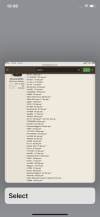Pressure relates to velocity. We choose the powder for our loads based on the estimated velocity that the charge will produce and shoot the most accurately. That is why we shoot ladders when trying to find that sweet spot our barrel likes. When pressure increase or decreases we can expect the bullets sent down the barrel to vary in their flight path to the target. Shoot a hotter load (velocity not temp wise) and the bullet will impact the target higher simply because gravity has had less time to act on the bullet. Shoot a cooler load (velocity not temp) and the slower moving bullet will shoot lower simply because gravity has had a longer time to act on the bullet. The same thing happens with ambient temperatures and pressure. Back in the day when the power was not as stable temp wise astute target shooters would take this into consideration. If the rifle was sighted in at 70 degrees and we are on the range getting ready to shoot and it's 90 degrees out the increase of 20 degrees will cause an increase in muzzle velocity proportionate to the difference in temperature. Conversely a drop in temperature will cause a drop in muzzle velocity. Other things to keep in mind is that if ammunition is kept in a hot car the temperatures will increase to the interior temperature of the vehicle, which can rise 40 or 50 degrees above ambient temperatures. This will cause a significant increase in muzzle velocity. It can also cause an increase in pressure which can result in an over pressure condition. When shooting competitively in the Army during the summer we were using Lake City Match ammo. We would take our ammunition out of our vehicle and place it in a shady place, sometimes in the shadow of the vehicle so that the temperature of the ammo would be close to ambient. At one point, and I do not know how true it is today the guideline was that for every 10 degrees hotter or colder would equal 100 FPS in velocity. Another consideration back then was that we were shooting both slow and rapid fire. The barrel chambers were hot from the continuous shooting. When shooting the slow fire stages we did not place the cartridge into the chamber of the rifle until we were ready to shoot. This kept the cartridge from heating up due to dwell time in the chamber which would cause an increase in temperature, thus velocity. There was no way to compute the dwell time vs temperature increase if the cartridge remains in the chamber. The process used back then was to place the cartridge on top of the magazine of the open action. When ready to shoot the bolt was closed and the shot taken as soon as accurately possible after cambering the round. This would minimize the temperature increase and as best possible minimize the temperature increase of the cartridge. My own personal dwell time after chambering the round was 10 seconds. If for some reason I did not get the shot off within 10 seconds of chambering the round I would eject it and place it on the side and load another, cooler round and start over. For those of you who cherish the first cold barrel round keep this in mind.
So in answer to the question about pressure, keep in mind pressure equals velocity and changes in velocity affect the flight of the bullet. For hunters who are worried about the treasured first round out of cold barrel, make sure you check your zero under the same conditions that you will be hunting in, especially altitude and temperature.
Keep in mind the words of LTC Lones Wigger, USAMU - Only hits count.



